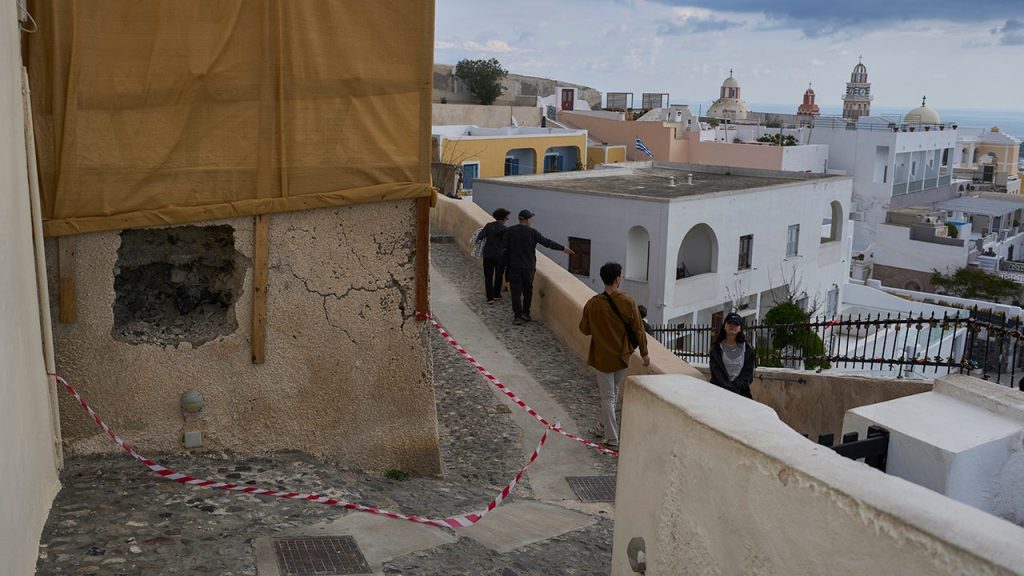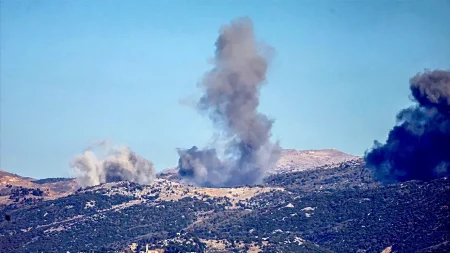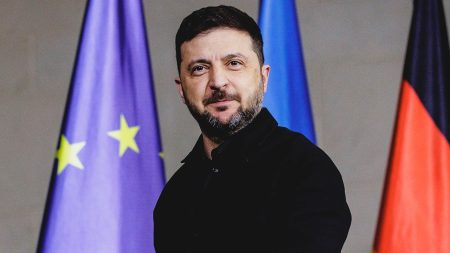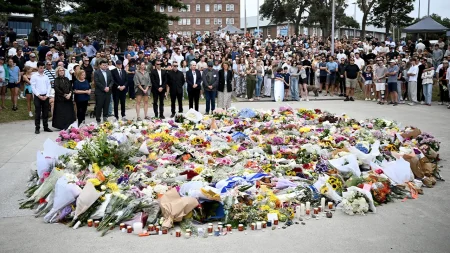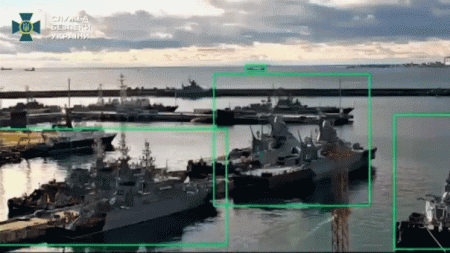The Greek island of Santorini, a renowned tourist destination, has been experiencing a significant seismic swarm since last week, prompting the evacuation of thousands of residents and visitors. The series of hundreds of undersea earthquakes, with magnitudes reaching up to 5, has raised concerns among authorities and seismologists, leading to the implementation of precautionary measures to ensure public safety. While no injuries have been reported, the continuous tremors have caused cracks in some older buildings, underscoring the potential for further damage.
Santorini Mayor Nikos Zorzos characterized the ongoing seismic activity as a “seismic swarm,” a phenomenon that involves a cluster of earthquakes occurring within a relatively short period. He explained that such swarms can persist for several weeks before gradually subsiding. While acknowledging the uncertainty surrounding the duration and intensity of the seismic activity, Zorzos expressed cautious optimism based on consultations with seismologists. He noted that the swarm might continue with smaller quakes or culminate in a single, slightly stronger tremor, followed by a gradual decrease in seismic activity.
The substantial number of earthquakes, exceeding 200 since Friday, has understandably prompted concern among residents and tourists. Around 9,000 people have opted to leave the island since Sunday, seeking safer ground amidst the ongoing tremors. Authorities have responded by increasing the availability of emergency flights and ferries to accommodate the departing population. In addition to facilitating evacuations, local authorities have taken further measures to mitigate potential risks. Public events have been canceled, travel to the island has been restricted, and construction work in certain areas has been temporarily halted.
Efthimios Lekkas, head of the state-run Earthquake Planning and Protection Organization, provided insights into the evolving seismic situation. He indicated that the epicenter of the earthquakes in the Aegean Sea was shifting northward, away from Santorini, offering a glimmer of hope for the island. Importantly, Lekkas emphasized that the ongoing seismic activity was not linked to the dormant volcanoes in the region, allaying fears of volcanic eruptions. While unable to precisely predict the duration of the seismic sequence, Lekkas acknowledged that it could persist for several days or even weeks.
The ongoing seismic swarm in Santorini underscores the inherent unpredictability of geological phenomena and the importance of preparedness and timely response measures. The prompt actions taken by local authorities, including facilitating evacuations, restricting travel, and halting construction activities, demonstrate a commitment to prioritizing public safety amidst evolving circumstances. The situation also highlights the value of expert guidance, with seismologists playing a critical role in assessing the situation and providing informed advice to decision-makers.
As Santorini navigates this period of heightened seismic activity, the collaborative efforts between local authorities, scientific experts, and the public will be essential for ensuring the safety and well-being of the island’s residents and visitors. The ongoing monitoring of the seismic situation will provide crucial information for adapting response strategies and mitigating potential risks as the situation unfolds. While the uncertainty surrounding the duration of the seismic swarm persists, the proactive measures implemented thus far provide reassurance that the safety and well-being of the community remain paramount.





